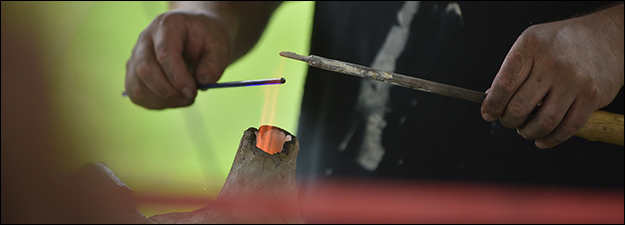"Antitheta quae sententiae pulchritudinem faciunt" (Isidore): Contrasts in Medieval Texts and Images
Sponsoring Organization(s)
Dept. of Medieval Studies, Central European Univ.
Organizer Name
Gerhard Jaritz
Organizer Affiliation
Central European Univ.
Presider Name
Gerhard Jaritz
Paper Title 1
"Imagines in Ecclesiis": Bonaventure's Defense of Sculpture in Thirteenth-Century France
Presenter 1 Name
Brandon L. Cook
Presenter 1 Affiliation
Univ. of Notre Dame
Paper Title 2
"Sub Una, Sub Utraque": Contrasting Visions of Religious Communities in Post-Hussite Bohemia
Presenter 2 Name
Katerina Hornickova
Presenter 2 Affiliation
Univ. Wien
Paper Title 3
Negotiating Female Chastity: Self-Fashioning In Late Medieval German Cosmographies
Presenter 3 Name
Irina Savinetskaya
Presenter 3 Affiliation
Independent Scholar
Paper Title 4
Contrasting Images from the Edges of the World: Eastern European Lands in the Fifteenth to the First Half of the Sixteenth Century
Presenter 4 Name
Alena Kliuchnik
Presenter 4 Affiliation
Central European Univ.
Start Date
13-5-2016 3:30 PM
Session Location
Schneider 1330
Description
Contrasts and opposites played a particular role in many medieval textual and visual discourses, discussions, and arguments: in social, religious, economic, and political respect as well as concerning specific topics like, e.g., virtues and vices, the "laudatio temporis acti," world upside down, and so on. The created ‘beauty of thought’ is certainly not (only) to be seen from an aesthetic point of view but generally with regard to aspects of didactics, function, and practicality. The session intends to offer different analyses of such contrast reasoning and the discussion to which extent they followed similar or comparable patterns.
Gerhard Jaritz
"Antitheta quae sententiae pulchritudinem faciunt" (Isidore): Contrasts in Medieval Texts and Images
Schneider 1330
Contrasts and opposites played a particular role in many medieval textual and visual discourses, discussions, and arguments: in social, religious, economic, and political respect as well as concerning specific topics like, e.g., virtues and vices, the "laudatio temporis acti," world upside down, and so on. The created ‘beauty of thought’ is certainly not (only) to be seen from an aesthetic point of view but generally with regard to aspects of didactics, function, and practicality. The session intends to offer different analyses of such contrast reasoning and the discussion to which extent they followed similar or comparable patterns.
Gerhard Jaritz

